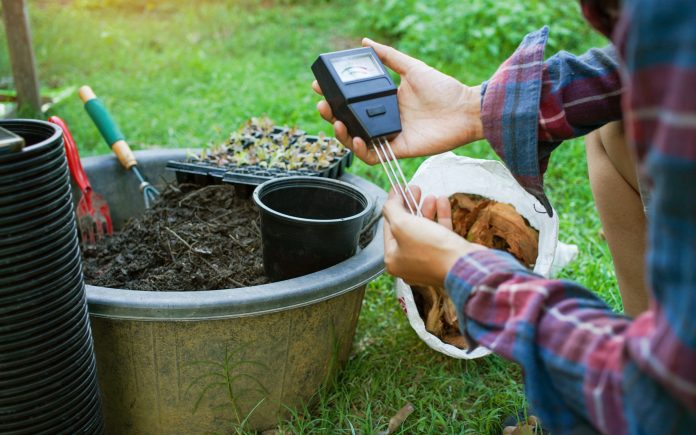
As you might have observed from your gardening experiences plants can be fussy things. The ideal location, amount of sunlight and 101 other factors influence your plant’s growing ability. One factor that is very beneficial in understanding before putting that new plant into the earth is soil pH.
What is Soil pH?
Let’s get all scientific for a moment and learn what pH is. In chemistry pH is a measure of how acidic or alkaline a solution is. Okay chemistry lesson over. Basically soil pH is a measure of how acidic or alkaline your soil is. Soil pH is measured on a scale of 1 to 14. If your soil has a pH value of less than 7 then you’ve got acidic soil. On the other hand if your soil has a pH value of greater than 7 then you have alkaline soil. A pH value of 7 is neutral, which means that you have neither acidic or alkaline soil.
The Effect of Soil pH on Plants
Knowing the pH value of your soil before planting is quite important as it has a direct effect on the health of the plant. Each plant has its own recommended soil pH value range. The cause of this is that soil pH impacts the availability of nutrients within the soil and crops have different nutrient requirements. For instance the nutrient nitrogen, a critical plant nutrient, is readily available in soil once the pH value is above 5.5. Similarily the nutrient phosphorous can be obtained once the pH value is between 6 and 7. If a plant is put into the wrong type of soil it’ll be lacking in nutrients that it requires which will encourage disease. Generally the ideal pH value range for soil is roughly 6 or 7 since it is the range where most nutrients can be easily available.
Finding Out pH of Soil
Finding the pH of soil is generally a trivial matter and the kits to do this ought to be available at most good garden centres. Usually a pH testing kit includes a small container / test tube, analyzing alternative and a color chart. A sample of soil is taken from the garden, placed into the container / test tube and a couple of drops of testing solution are added. The container is then shaken and left for a definite period of time. The colour of the sample from the container is then compared against the color chart to determine the pH value of the soil. Note that if you would like to ascertain the soil pH of an huge area it could be a great idea to take soil samples from several diverse locations, combine the samples and then do the test on the combined sample.
A fast way to discover the pH of an area is to look to find out if there are any home hydrangeas (Hydrangea macrophylla) currently growing in the region. If so observe the colour of its flowers. A soil pH of 6 or under will produce blue flowers as a soil pH of 6.8 or higher will produce pink flowers.
How to Make Soil More Alkaline
If your soil is acidic or slightly acidic it is possible to take action to make it more alkaline to adapt the plants you wish to put there. You may make your soil more alkaline (raise its pH value) by including a kind of lime. Lime is a compound of calcium or magnesium and calcium. It’s usually applied in the kind of ground agricultural limestone, burnt lime or hydrated lime (slaked lime). The bigger the limestone particles then the faster your soil will become more alkaline. That is why hydrated lime will give the quickest performance since it’s slightly soluble in water so that it can permeate the soil faster and reduce acidity quicker.
Increasing the pH of your soil isn’t an overnight process and it’s ideal to allow 2-3 weeks to permit the lime to neutralize the acidity of the soil acidity.
How to Make Soil More Acidic
Some ornamental plants and fruit plants such as blueberries need an acidic soil. To make your soil more acidic (reduce its pH value) you can use either aluminium sulphate or sulphur. Aluminium sulphate is the fastest acting because it increases the acidity the moment it disolves into the ground. The drawbacks are though that its effects can be short term and it’s likely to over-apply it.
The more recommended but slower way to maximize your soil pH is to use sulphur. Sulphur converts to sulphuric acid with the support of bacteria from the soil but this takes time based on factors such as the presence of germs, feel of the soil and moisture levels. This could take weeks if conditions aren’t ideal.
Conclusion
Never forget to take into consideration soil pH when deciding what to plant in your soil. If you don’t know what the pH of your soil is then test your soil and if needs be take steps mentioned before to change the pH value with time. Best of luck!





